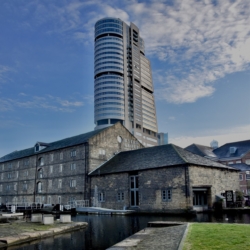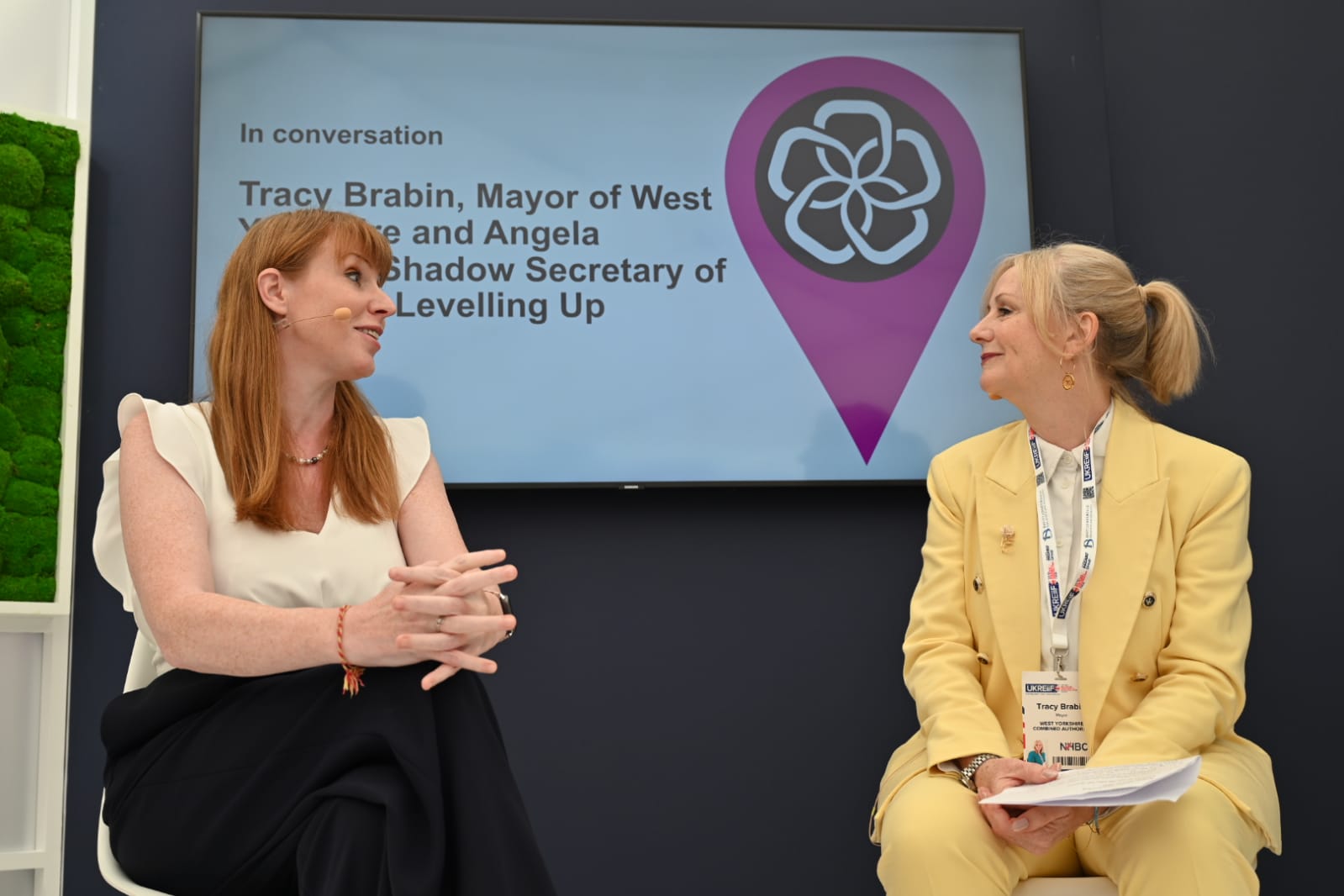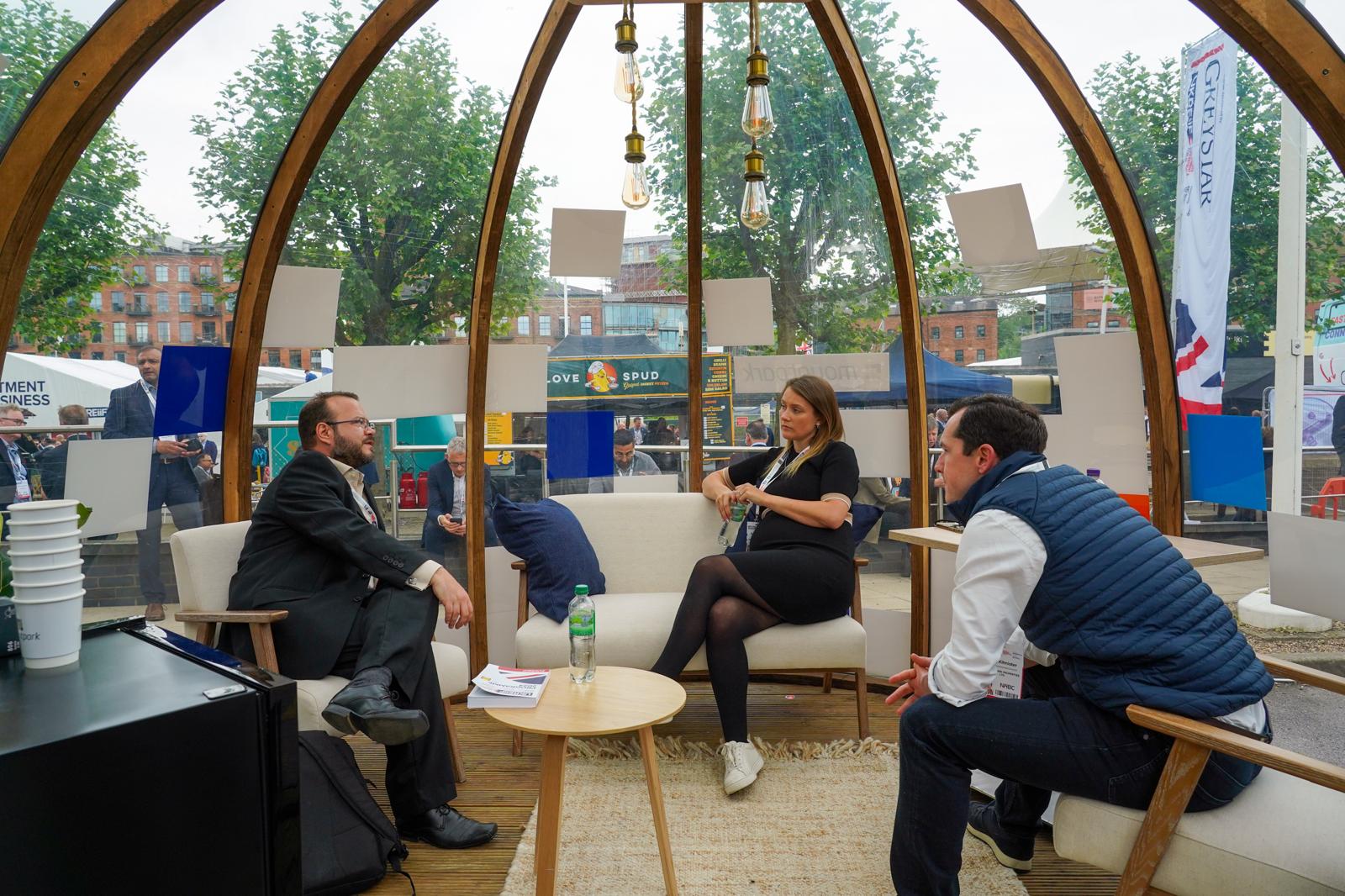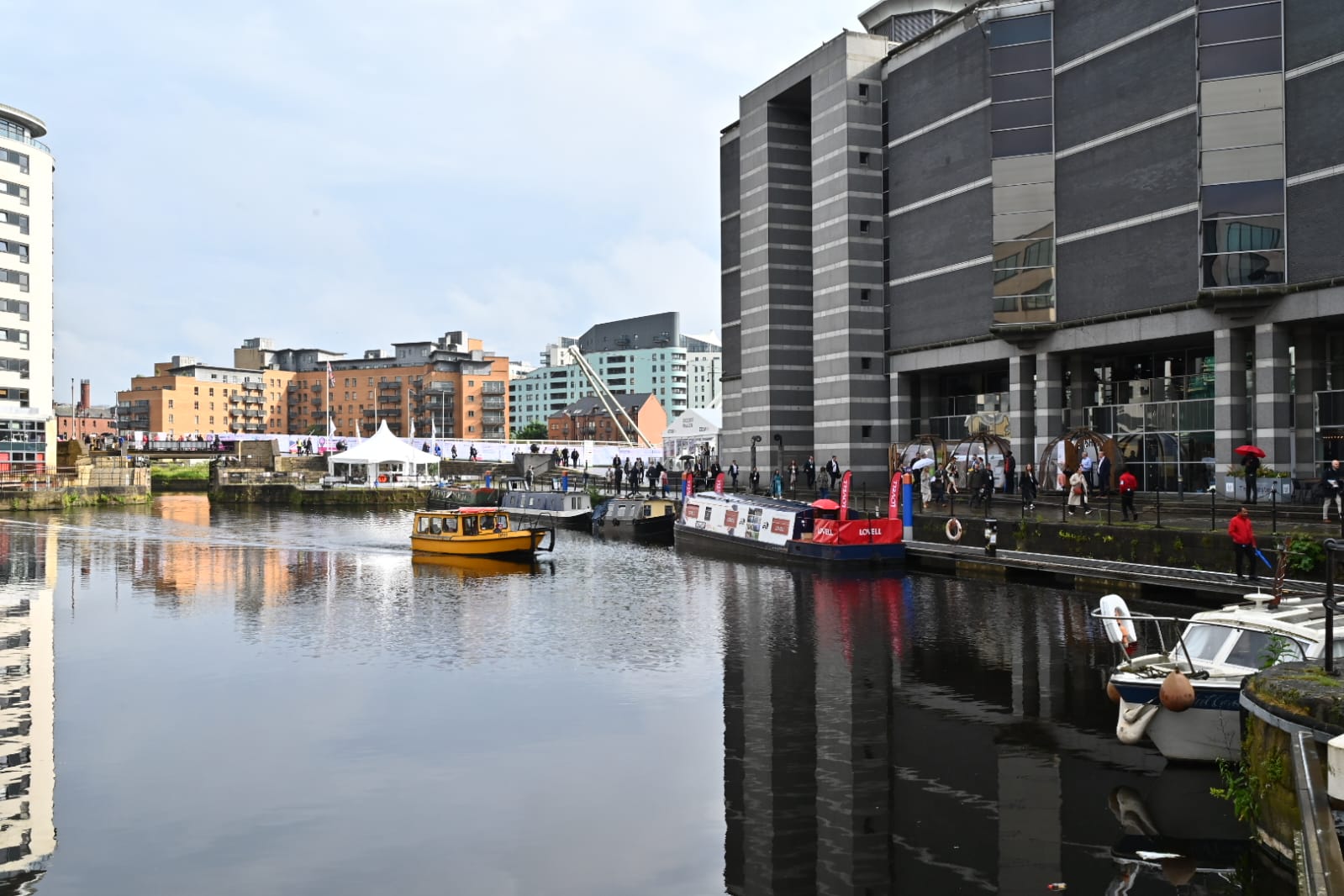 An hour or two on the train from that part of the UK that gets talked about most and much better optics for local authorities to chase private investment than the South of France, little wonder the UK’s Real Estate Investment and Infrastructure Forum (UK REiiF) proved so popular this year. Over 13,000 attendees descended on Leeds for three days in May this year, a figure all the more remarkable when considering the event only started in 2022 with nearly 4000 attendees, which it nearly doubled the following year. Back to 2024 then and housing was a strong focus but that’s not to say some interesting stories from the commercial property sector didn’t also arise.
An hour or two on the train from that part of the UK that gets talked about most and much better optics for local authorities to chase private investment than the South of France, little wonder the UK’s Real Estate Investment and Infrastructure Forum (UK REiiF) proved so popular this year. Over 13,000 attendees descended on Leeds for three days in May this year, a figure all the more remarkable when considering the event only started in 2022 with nearly 4000 attendees, which it nearly doubled the following year. Back to 2024 then and housing was a strong focus but that’s not to say some interesting stories from the commercial property sector didn’t also arise.
Held in the Leeds Dock area, UK REiiF takes over the Royal Armouries and surrounding permanent buildings with a village of adjacent waterside pavilions, as well as over 150 fringe events around the city. Firms from across the built environment from investors, developers, occupiers, agents and contractors were all present, not to mention supermarket giant Aldi (looking to expand its real estate reach). And nearly all venues had some kind of speaking sessions meaning the official programme was Yellow Pages-like in heft.
There was strong presence from cities and regions the length and breadth of the country, from Cornwall (home to the ‘Space Cluster’ of sector specialists) to Manchester, Liverpool and the Midlands plus the life sciences cluster of London, Oxford and Cambridge.
Politics loomed large throughout the event, beginning with a visit from Angela Rayner on the first day. The Deputy Labour Leader and Shadow Housing Secretary talked about ‘Getting shovels in the ground’ and setting out a ‘New Towns Code for more social and affordable homes in tree lined streets with good links to town and city centres and access to nature’. And news of the general election in the middle of the event got attendees talking politics even more, with a broadly positive take on the announcement’s impact on the built environment.
News of the general election got attendees talking politics, with a broadly positive take on the announcement’s impact on the built environment
So why were people there? Matthew Blair, principal with architects BVN said, “Attending UK REiiF was a strategic decision: We saw it as an opportunity to further understand the UK’s investment priorities and development plans and to explore how our expertise from Australia can contribute to and benefit from this market. It was interesting to hear about ideas for the future of public/private contracts, particularly as we have a keen interest in the future of healthcare – which was also a key theme of the conference programme. Many of the sessions underscored the importance of global perspectives in shaping local solutions which was positive for us to hear.”
Jerry Lehane, meanwhile, board director with chapmanbdsp added, “It offered the opportunity to mix with a huge array of industry figures; the atmosphere was buzzing with productivity. Plus, Leeds is an excellent host city for those in the built environment industry.” The location played a key part. While some cities crumble under the weight of thousands of extra people with outrageous taxis queues and hostile hospitality staff, Leeds excelled with good service and a friendly vibe – I’m sure the £17.6 million that UK REiiF generated for the local economy in 2022/2023 helped.

Visitors from London such as myself abandoned our metropolitan froideur and talked to strangers we happened to meet in the coffee queue or sat next to in a panel session audience. I struck up conversations with people from a wide range of sectors from facility managers to lawyers and acousticians, and from CEOs to those in entry level roles. Unsurprisingly, all had something interesting to put forward.
Acknowledging the need for greater diversity in the commercial property sector, UK REiiF made some strong inroads in terms of not only the proportion of female and ethnic minority speakers but also the overall attendee statistics. To this end, it offered attendees to bring U25s on a free ticket for every five tickets sold meaning younger, less senior colleagues could get that experience of attending an industry event without their employer incurring additional cost. Says Charlotte Bate, Part 1 with The Manser Practice Architects, “Attending UKREiiF provided me with a new perspective on a range of industry-related topics I have an interest in, which includes culture, sustainability and social value. It’s certainly given me a lot to think about, and a renewed excitement and confidence to progress my career in the industry.”

I share Charlotte’s areas of interest and one of my personal highlights was the discussion on how to evolve and curate cultural ecosystems within large-scale regeneration projects, organised by Studio Egret West and Sound Diplomacy. Entitled Monolith, Mosaic or Mashup, it transformed a standard news conference room into a nightclub, thanks to some superb lighting and sound, with people on their feet, contributors in the round ready to do battle. It certainly blew away some Wednesday morning cobwebs and got everyone in the room thinking about the importance of keeping music and nightlife in the mix when meaningfully master planning.
Social value was another topic that threaded through much of the programme of the event and indeed the conversations had in between sessions. My chat with Andrei Martin, partner at PLP Architecture touched on how this issue had informed projects it was involved in such as 30 Minories, a London office project currently with planning consent granted. The design comprises two buildings in the City of London, a new office building and a retained Victorian former warehouse benefiting the local community and providing affordable workspace for social enterprises.
Indeed, the social impact start-up Patch caught my eye too. It announced the opening of new ‘neighbourhood workspace’ to the former Debenhams on Bournemouth Square this autumn, joining its existing locations of Twickenham, Chelmsford and High Wycombe. The £2 million commercial property project is part of a long-term vision to revitalise the former department store and support business growth, offering design-led coworking and offices with spaces for community and cultural uses across the building’s first floor.
Back to projects based in the big smoke and Roger Madelin, Joint Head of British Land’s 53 acre development at Canada Water was in splendid form at the developer’s press breakfast on the Thursday. He talked me through The Grand Press, a site once home to Europe’s largest printing facility dating back to 1989. Next to an intricate model of the scheme, he explained how it will provide 158,000 sq. ft of Grade A workspace with high ceilings and an abundance of natural light throughout. And, summing up the scheme in his own words, added, “It’s just a f***ing good workplace.”
British Land was also keen to demonstrate its life sciences credentials at Canada Water and other locations include 338 Euston Road and The Crick at Regent’s Place. Lendlease too was also keen to set its stall in the sector, presenting how an Italian project, the Milan Innovation District (MIND) could provide a blueprint for its plans in the UK in terms of collaboration between private sector firms of differing sizes and academic institutions.
Throughout the three days, UK REiiF offered an open, inclusive environment for useful conversations about current and future uses of commercial property and not even torrential downpours on the middle day could dampen the spirits. ‘Glastonbury in suits’ one wry observer dubbed it as the heavens opened. While not quite embodying the hedonistic fields of Somerset, Leeds certainly made in a livelier affair than your average commercial property and real estate event.
Helen Parton is an internationally renowned writer, commentator, curator and editorial consultant within the design, architecture and built environment sectors.
Main image: Bridgewater Place, Leeds by Dave Noonan















June 3, 2024
Forget Cannes. Commercial property sector hits the North to great effect
by Helen Parton • Cities, Comment, Property, Public Sector
Held in the Leeds Dock area, UK REiiF takes over the Royal Armouries and surrounding permanent buildings with a village of adjacent waterside pavilions, as well as over 150 fringe events around the city. Firms from across the built environment from investors, developers, occupiers, agents and contractors were all present, not to mention supermarket giant Aldi (looking to expand its real estate reach). And nearly all venues had some kind of speaking sessions meaning the official programme was Yellow Pages-like in heft.
There was strong presence from cities and regions the length and breadth of the country, from Cornwall (home to the ‘Space Cluster’ of sector specialists) to Manchester, Liverpool and the Midlands plus the life sciences cluster of London, Oxford and Cambridge.
Politics loomed large throughout the event, beginning with a visit from Angela Rayner on the first day. The Deputy Labour Leader and Shadow Housing Secretary talked about ‘Getting shovels in the ground’ and setting out a ‘New Towns Code for more social and affordable homes in tree lined streets with good links to town and city centres and access to nature’. And news of the general election in the middle of the event got attendees talking politics even more, with a broadly positive take on the announcement’s impact on the built environment.
So why were people there? Matthew Blair, principal with architects BVN said, “Attending UK REiiF was a strategic decision: We saw it as an opportunity to further understand the UK’s investment priorities and development plans and to explore how our expertise from Australia can contribute to and benefit from this market. It was interesting to hear about ideas for the future of public/private contracts, particularly as we have a keen interest in the future of healthcare – which was also a key theme of the conference programme. Many of the sessions underscored the importance of global perspectives in shaping local solutions which was positive for us to hear.”
Jerry Lehane, meanwhile, board director with chapmanbdsp added, “It offered the opportunity to mix with a huge array of industry figures; the atmosphere was buzzing with productivity. Plus, Leeds is an excellent host city for those in the built environment industry.” The location played a key part. While some cities crumble under the weight of thousands of extra people with outrageous taxis queues and hostile hospitality staff, Leeds excelled with good service and a friendly vibe – I’m sure the £17.6 million that UK REiiF generated for the local economy in 2022/2023 helped.
Visitors from London such as myself abandoned our metropolitan froideur and talked to strangers we happened to meet in the coffee queue or sat next to in a panel session audience. I struck up conversations with people from a wide range of sectors from facility managers to lawyers and acousticians, and from CEOs to those in entry level roles. Unsurprisingly, all had something interesting to put forward.
Acknowledging the need for greater diversity in the commercial property sector, UK REiiF made some strong inroads in terms of not only the proportion of female and ethnic minority speakers but also the overall attendee statistics. To this end, it offered attendees to bring U25s on a free ticket for every five tickets sold meaning younger, less senior colleagues could get that experience of attending an industry event without their employer incurring additional cost. Says Charlotte Bate, Part 1 with The Manser Practice Architects, “Attending UKREiiF provided me with a new perspective on a range of industry-related topics I have an interest in, which includes culture, sustainability and social value. It’s certainly given me a lot to think about, and a renewed excitement and confidence to progress my career in the industry.”
I share Charlotte’s areas of interest and one of my personal highlights was the discussion on how to evolve and curate cultural ecosystems within large-scale regeneration projects, organised by Studio Egret West and Sound Diplomacy. Entitled Monolith, Mosaic or Mashup, it transformed a standard news conference room into a nightclub, thanks to some superb lighting and sound, with people on their feet, contributors in the round ready to do battle. It certainly blew away some Wednesday morning cobwebs and got everyone in the room thinking about the importance of keeping music and nightlife in the mix when meaningfully master planning.
Social value was another topic that threaded through much of the programme of the event and indeed the conversations had in between sessions. My chat with Andrei Martin, partner at PLP Architecture touched on how this issue had informed projects it was involved in such as 30 Minories, a London office project currently with planning consent granted. The design comprises two buildings in the City of London, a new office building and a retained Victorian former warehouse benefiting the local community and providing affordable workspace for social enterprises.
Indeed, the social impact start-up Patch caught my eye too. It announced the opening of new ‘neighbourhood workspace’ to the former Debenhams on Bournemouth Square this autumn, joining its existing locations of Twickenham, Chelmsford and High Wycombe. The £2 million commercial property project is part of a long-term vision to revitalise the former department store and support business growth, offering design-led coworking and offices with spaces for community and cultural uses across the building’s first floor.
Back to projects based in the big smoke and Roger Madelin, Joint Head of British Land’s 53 acre development at Canada Water was in splendid form at the developer’s press breakfast on the Thursday. He talked me through The Grand Press, a site once home to Europe’s largest printing facility dating back to 1989. Next to an intricate model of the scheme, he explained how it will provide 158,000 sq. ft of Grade A workspace with high ceilings and an abundance of natural light throughout. And, summing up the scheme in his own words, added, “It’s just a f***ing good workplace.”
British Land was also keen to demonstrate its life sciences credentials at Canada Water and other locations include 338 Euston Road and The Crick at Regent’s Place. Lendlease too was also keen to set its stall in the sector, presenting how an Italian project, the Milan Innovation District (MIND) could provide a blueprint for its plans in the UK in terms of collaboration between private sector firms of differing sizes and academic institutions.
Throughout the three days, UK REiiF offered an open, inclusive environment for useful conversations about current and future uses of commercial property and not even torrential downpours on the middle day could dampen the spirits. ‘Glastonbury in suits’ one wry observer dubbed it as the heavens opened. While not quite embodying the hedonistic fields of Somerset, Leeds certainly made in a livelier affair than your average commercial property and real estate event.
Helen Parton is an internationally renowned writer, commentator, curator and editorial consultant within the design, architecture and built environment sectors.
Main image: Bridgewater Place, Leeds by Dave Noonan